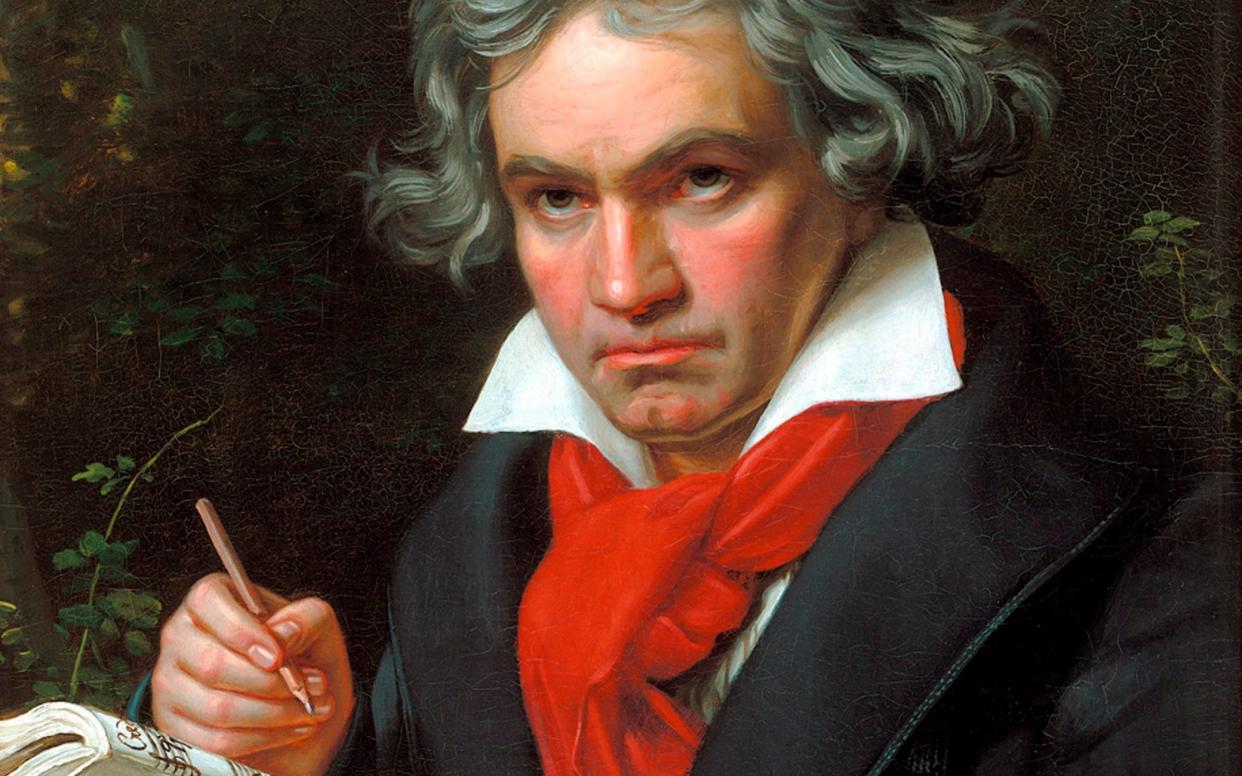Beethoven Symphonies 1 & 2, Akademie für Alte Musik review: is this really what the composer wanted?

The 250th anniversary of Beethoven’s birth has somewhat fallen off the cultural radar owing to the pandemic, though a few of the musicians streaming online concerts from their music rooms have focused on Beethoven, notably pianist Igor Levit. And the record industry is continuing to release recordings of Beethoven made before the lockdown kicked in.
The latest comes from the crack “period instrument” orchestra the Akademie für Alte Musik. It’s just released a recording of the First and Second symphonies, which are weighty and amazingly bold works in their own right, and far from being mere curtain-raisers for the more famous later symphonies. True to its calling as a group which tries to recreate “what the composer might have heard”, to use that well worn phrase of the period performance movement, the Akadamie offers a lean and interestingly coloured Beethoven. The number of string players has been cut right back, and they play without vibrato. The resulting sound is fascinating, transparent and intimate yet surprisingly punchy when Beethoven lets rip with one of his trademark loud unexpected chords. The balance is weighted much more towards the woodwinds, and the horns and trumpets and kettledrums really cut through the sound. Most importantly they play without a conductor, which gives an intimate, chamber-sized feel to the playing.
But how important are those things, and are they really close to “what the composer might have heard”? There’s a telling admission in the liner notes, where the orchestra’s leader Bernhard Forck tells us the players explored the various Viennese venues where Beethoven’s orchestral music was first performed, to get a feel for the right weight and resonance of the sound. He says they took the smaller halls as their model, but that’s not “following the science”, to use the current phrase; that’s making a decision based on the orchestra’s artistic preference. Who’s to say Beethoven wouldn’t have preferred a bigger hall, not to mention a heftier orchestra? As the great pianist Charles Rosen once tartly remarked, the period performance movement tends to mix up “what the composer wanted” with “what the composer got”.
My scepticism about the whole premise of the recording was reinforced by the fact that Beethoven’s two symphonies are paired on the CD with two symphonies by CPE Bach, one of the sons of the great JS Bach. They date from a generation or more before Beethoven’s symphonies, and the delicate highly coloured orchestral sound feels exactly right for these slender little pieces, which make Haydn’s and Mozart’s symphonies seem massive by comparison. The liner note writer tries hard to persuade us that the sudden stops and starts in CPE Bach’s symphonies are something like Beethoven’s radicalism, so the similar sound the orchestra brings to both composers is appropriate. This won’t wash. Bach is a mannerist, who produces lots of interesting momentary effects; Beethoven’s surprises work at the level of the whole form, which is why they are infinitely grander.
This is why the delicate, chamber-sized approach of the Berlin group seems to me completely misconceived, despite the occasional intriguing moment. It reduces Beethoven to the dimensions of a mannerist, which is no way to honour him. The uprushing scale at the beginning of the Finale of the First Symphony ought to be exciting; here it’s so perfect and delicately played it just sounds prissy. Even worse is the opening gesture of the finale of the Second Symphony. This should be a huge comic gesture, a giant pratfall of Falstaffian proportions, but in this performance it just sounds neat and tidy. That’s something Beethoven should never be.
Beethoven Symphonies 1 & 2 is released by Harmonia Mundi

